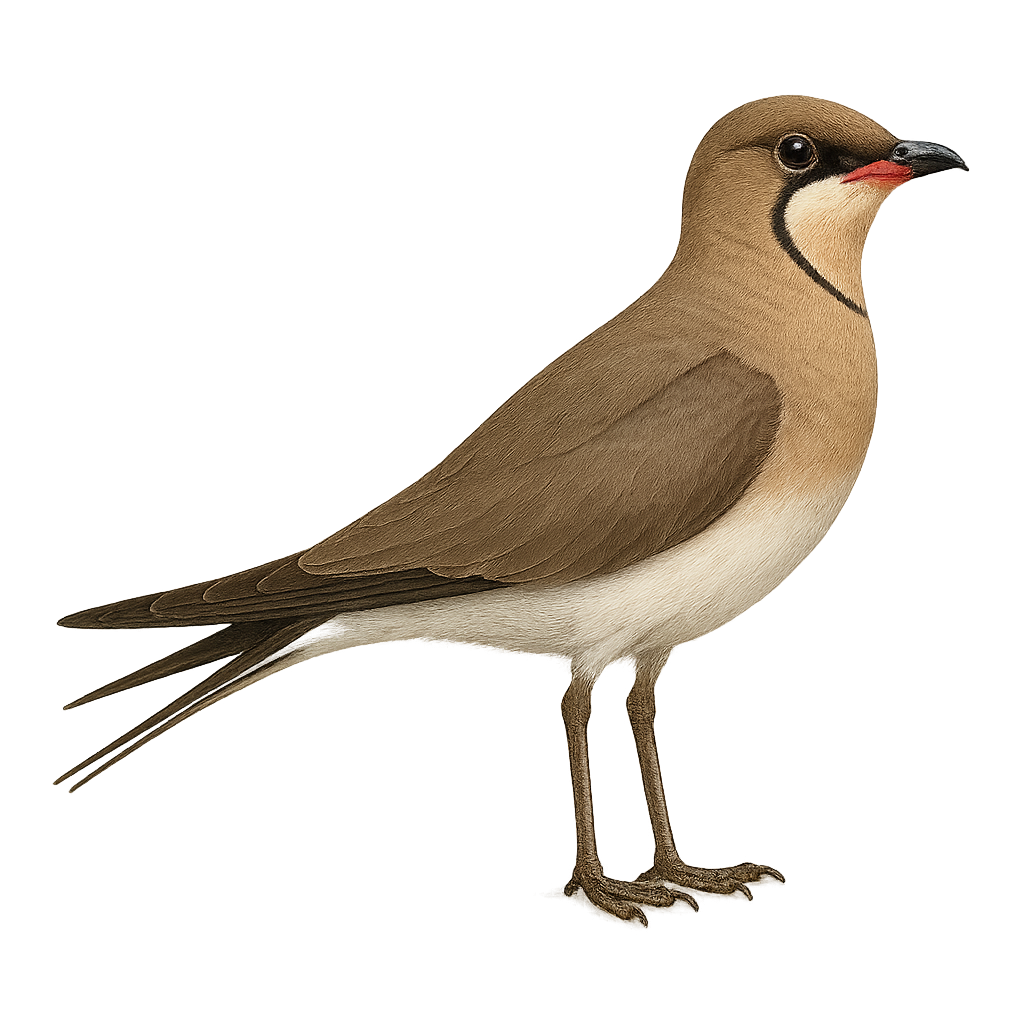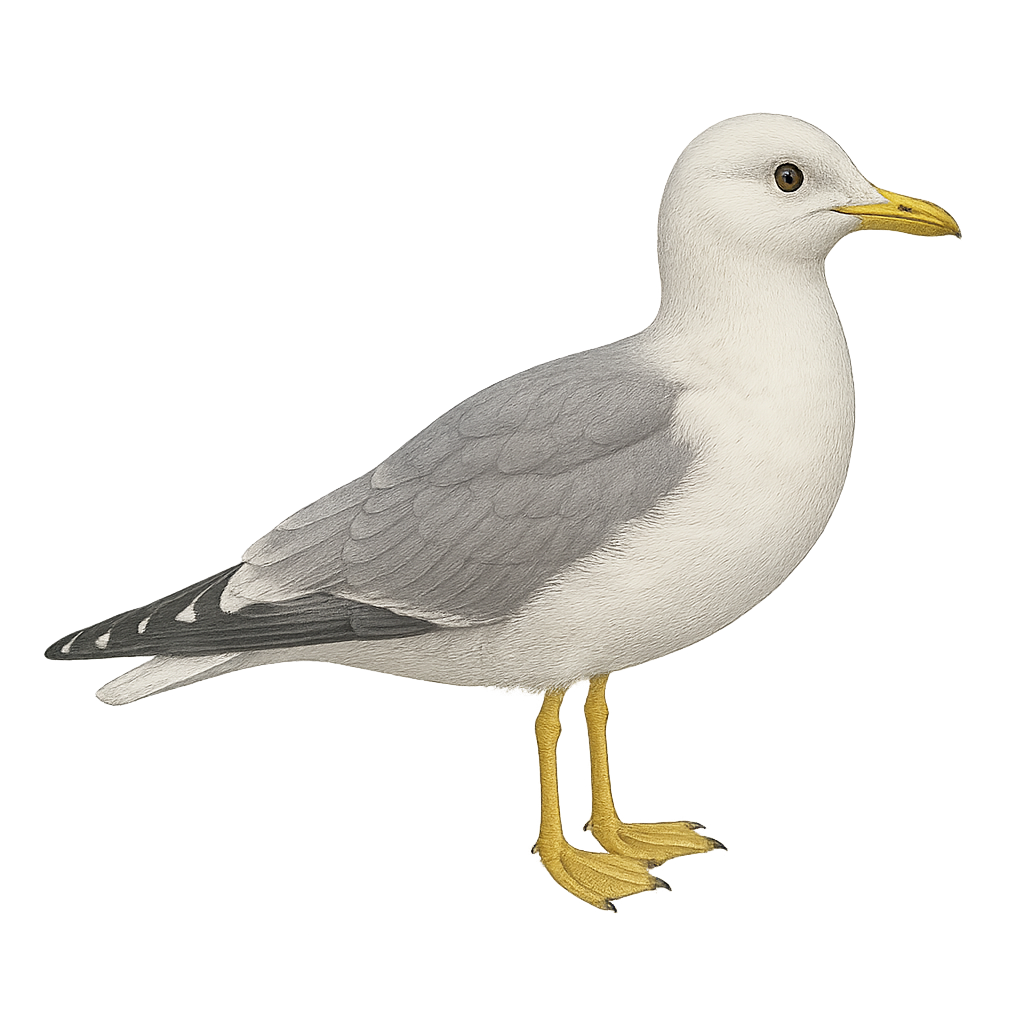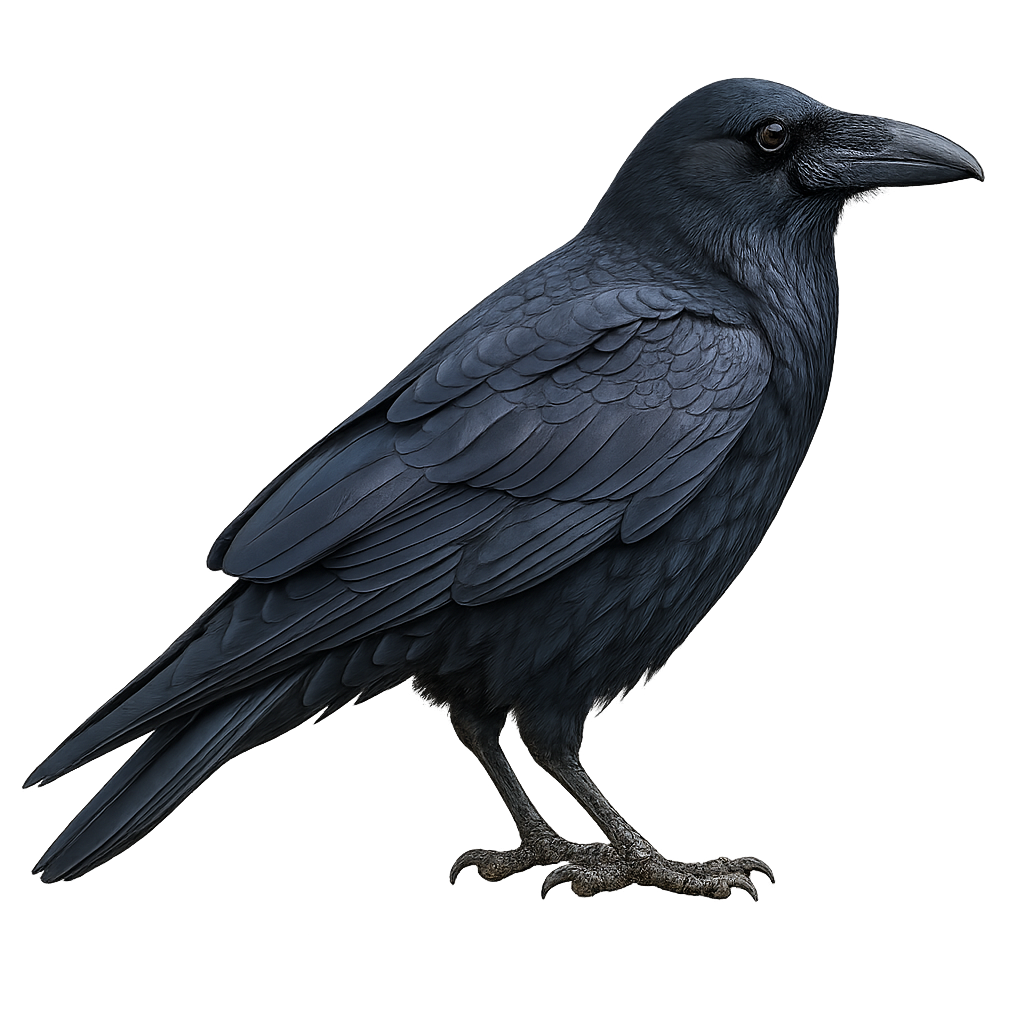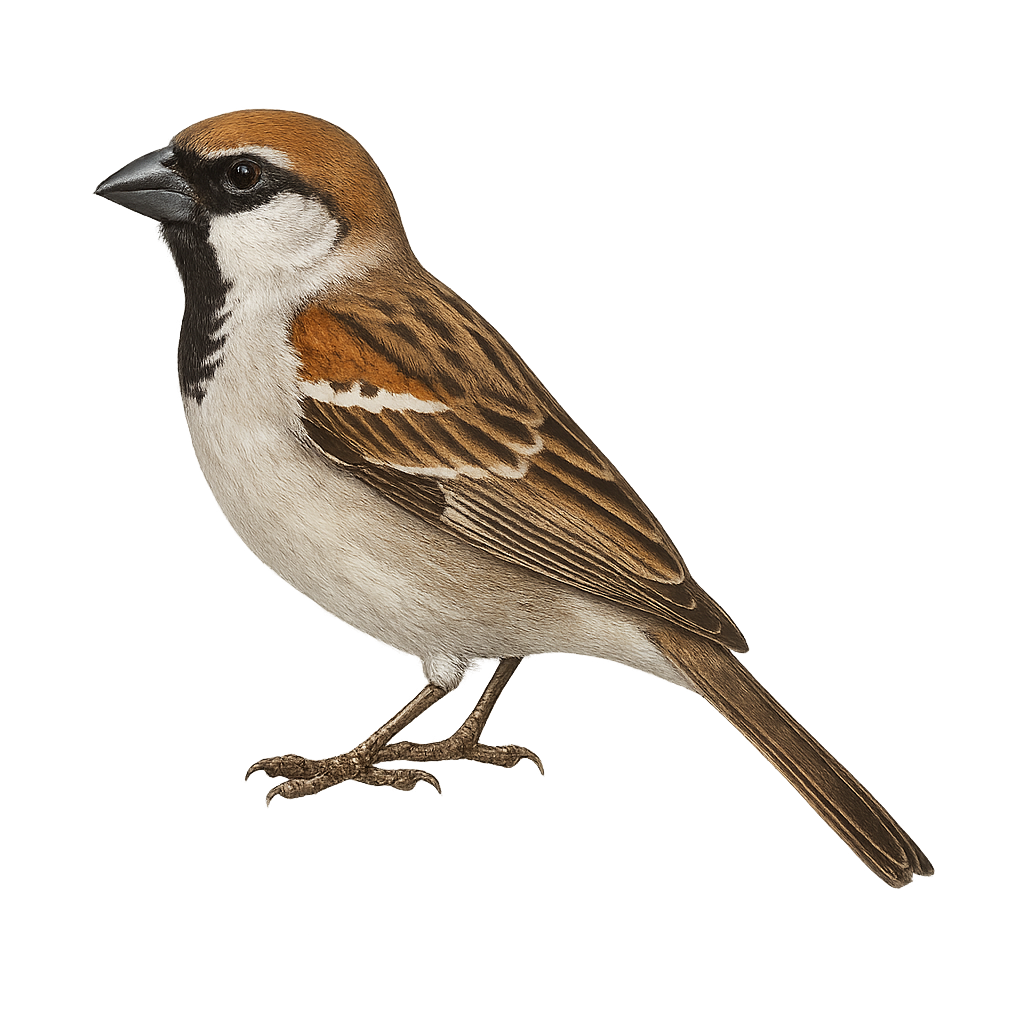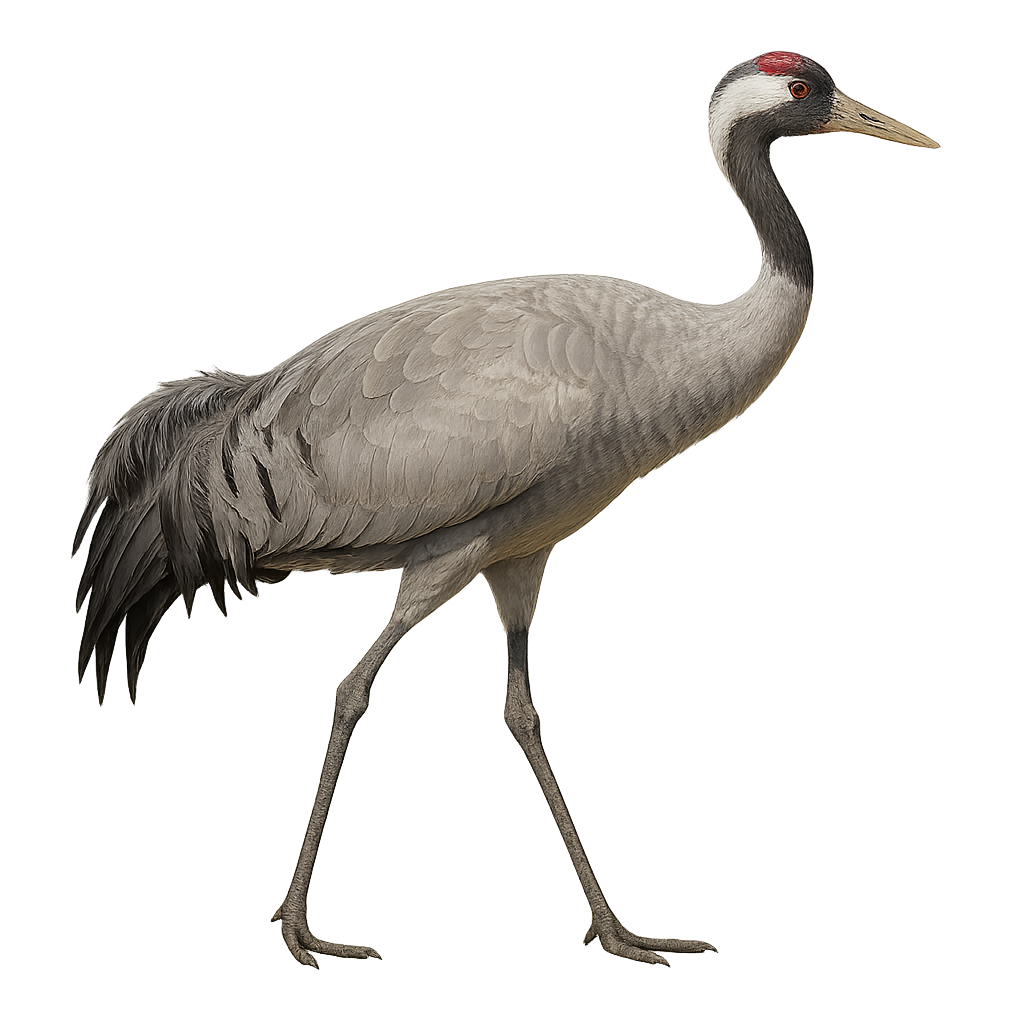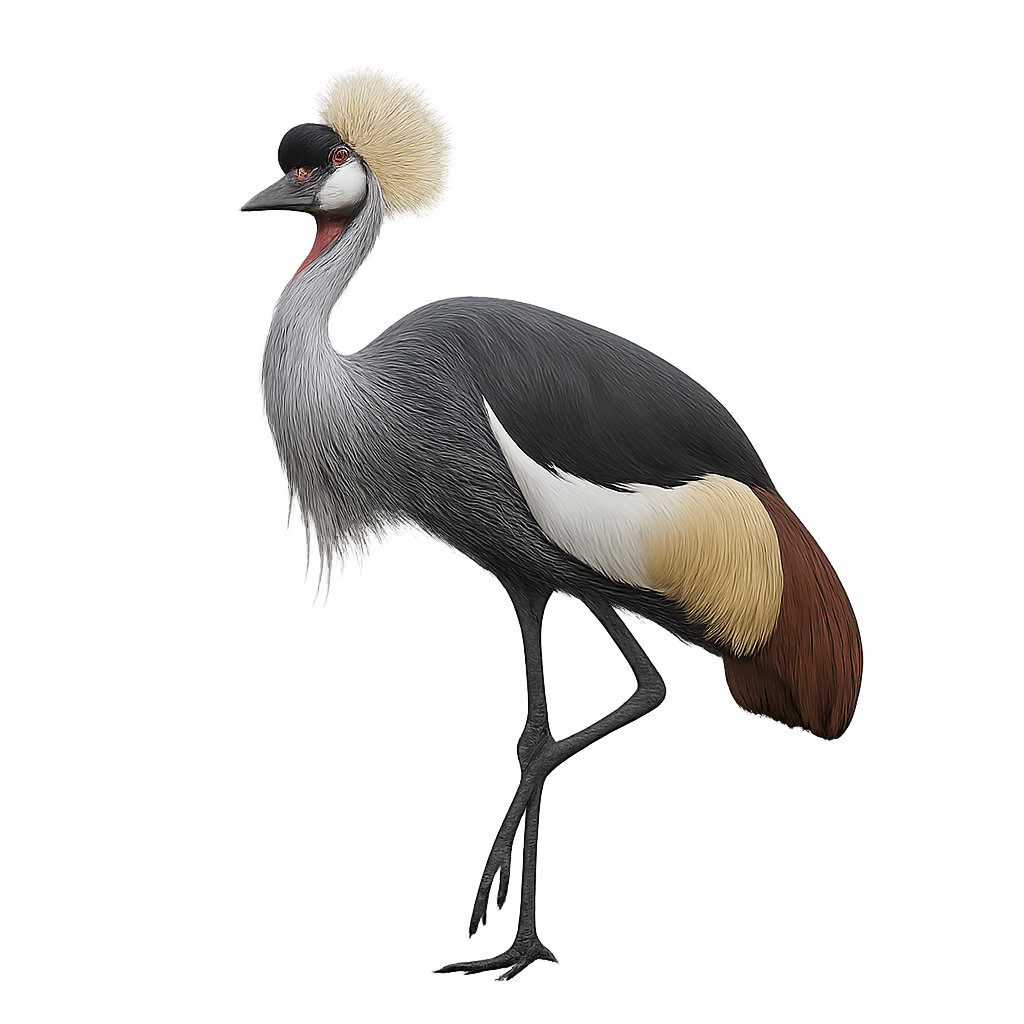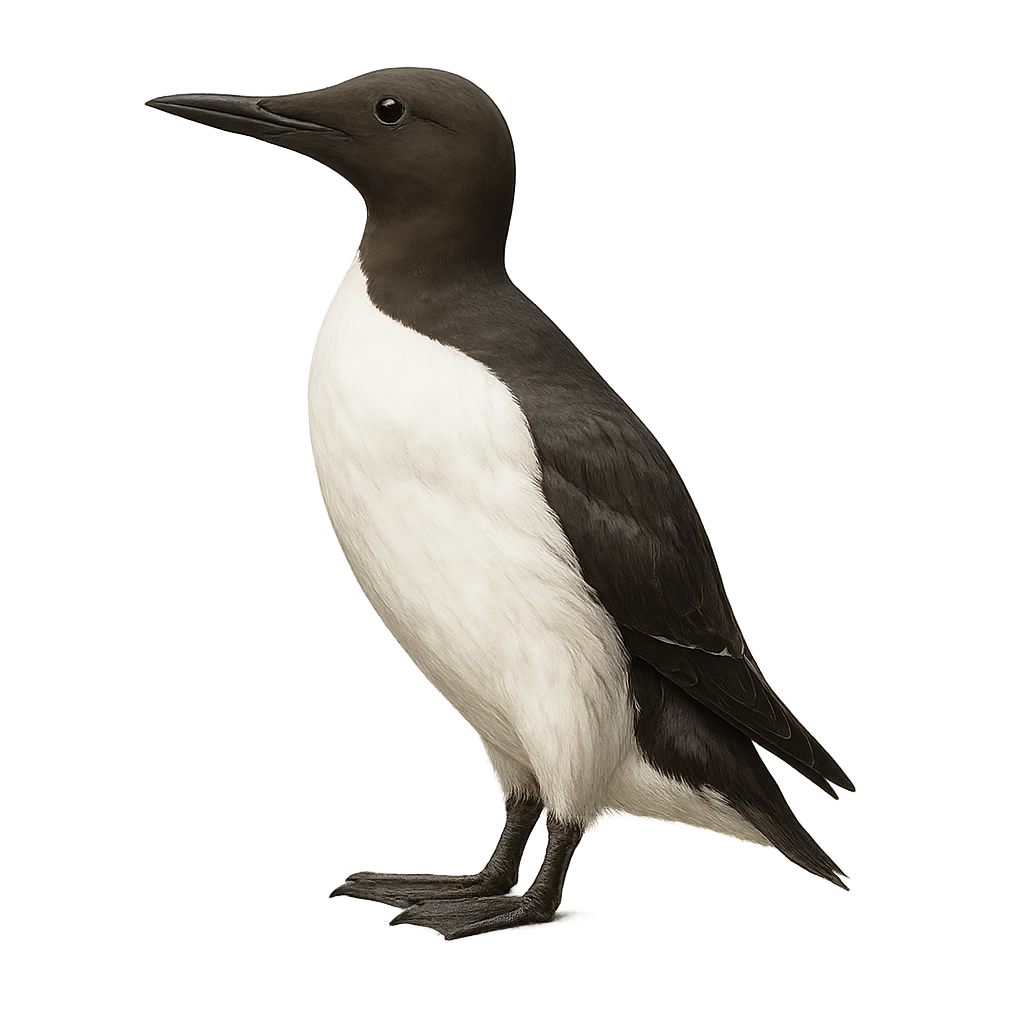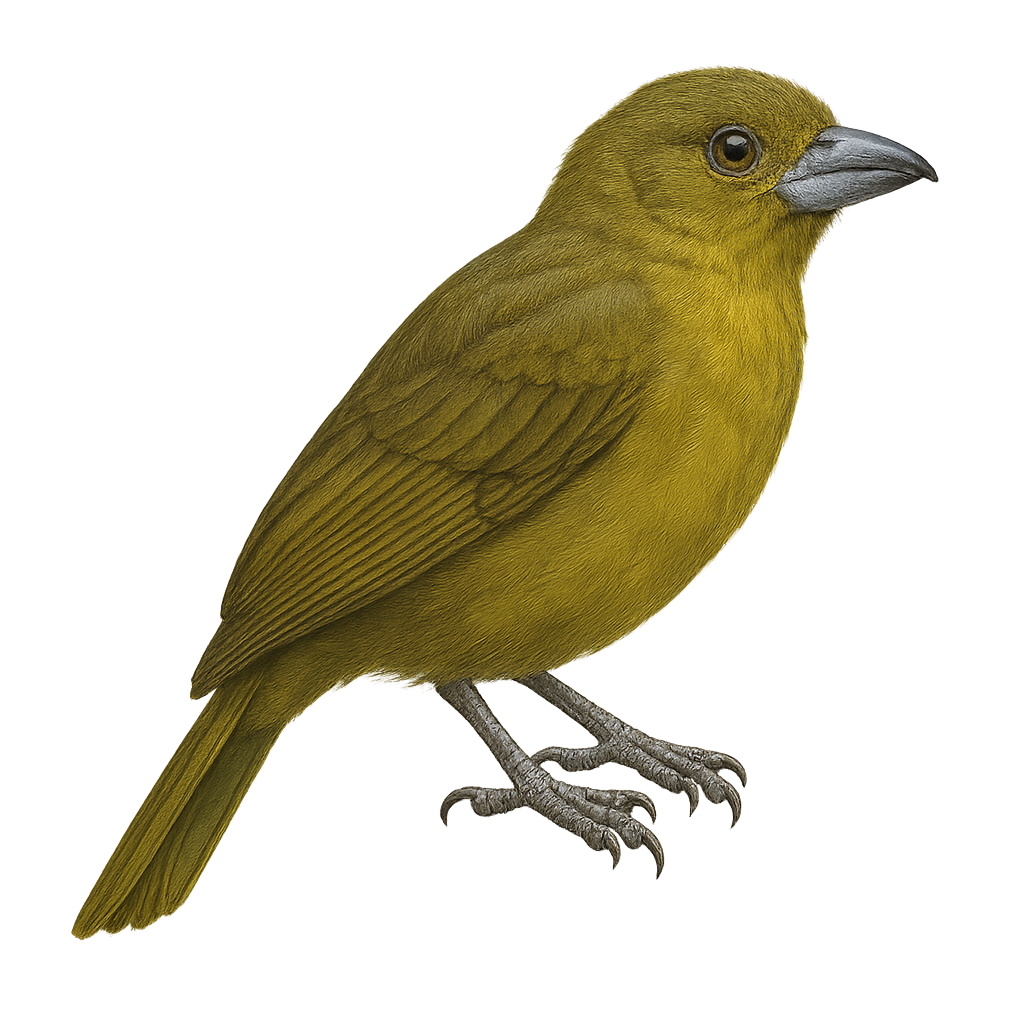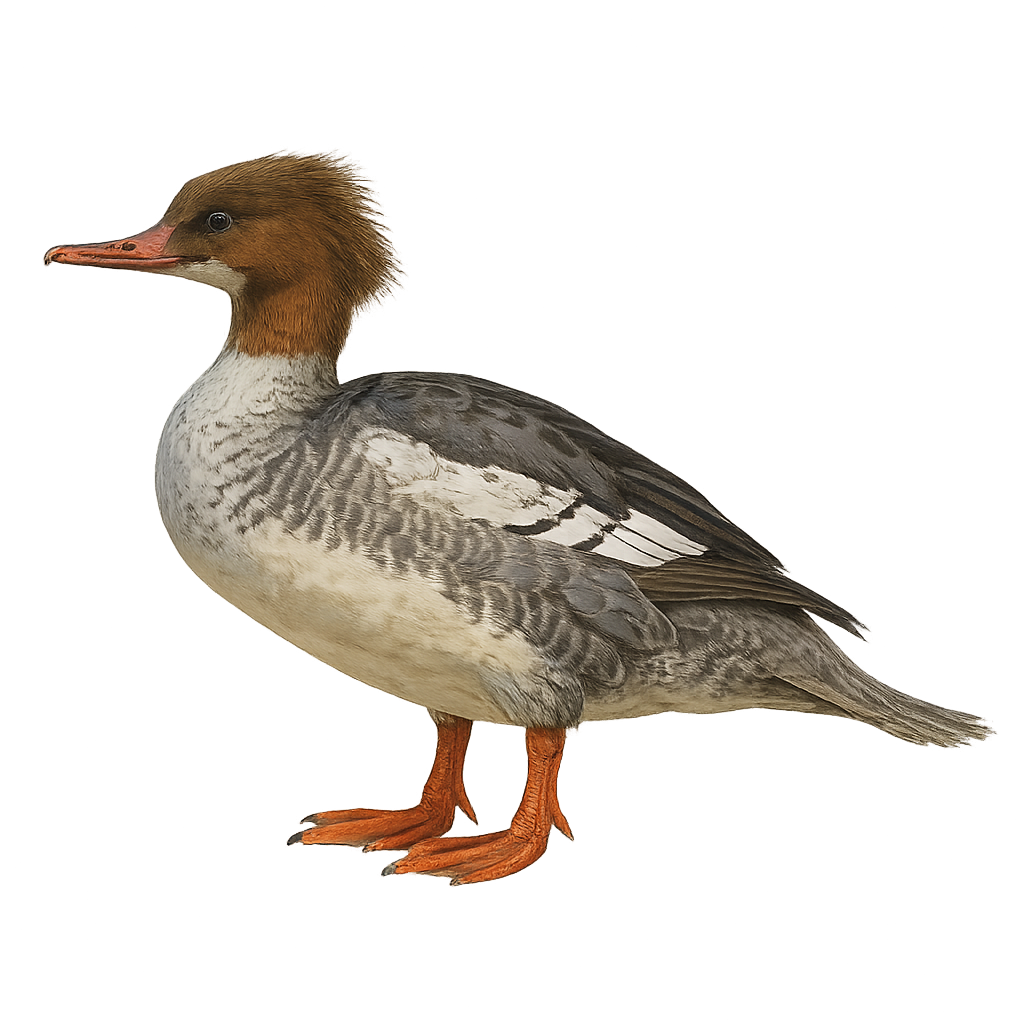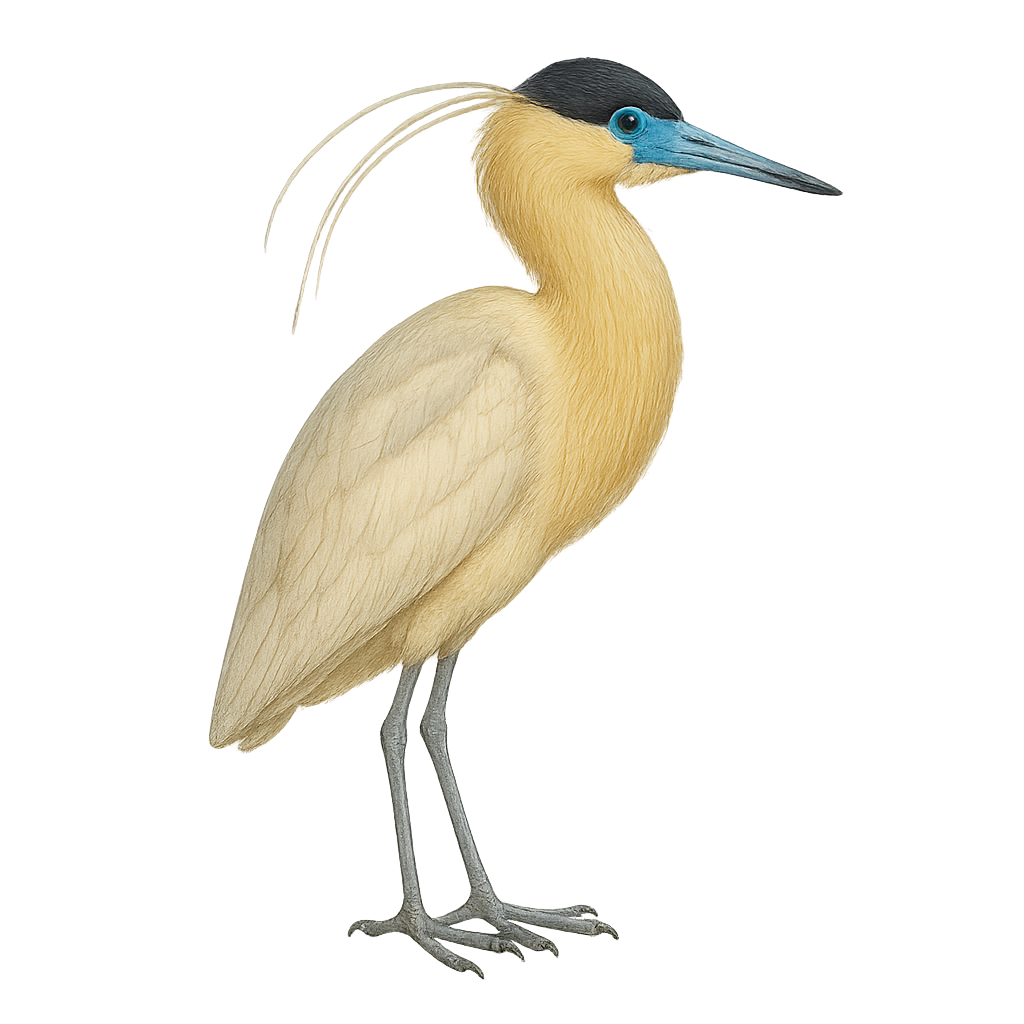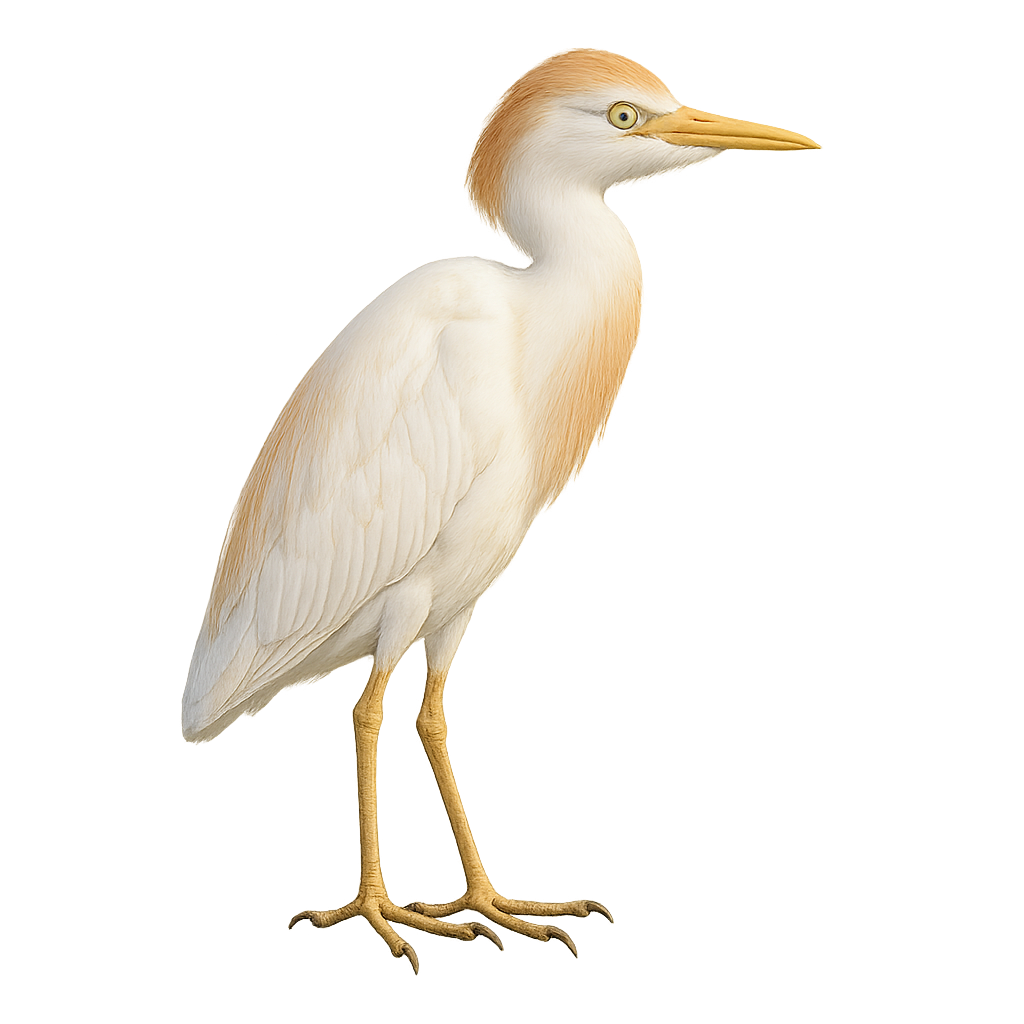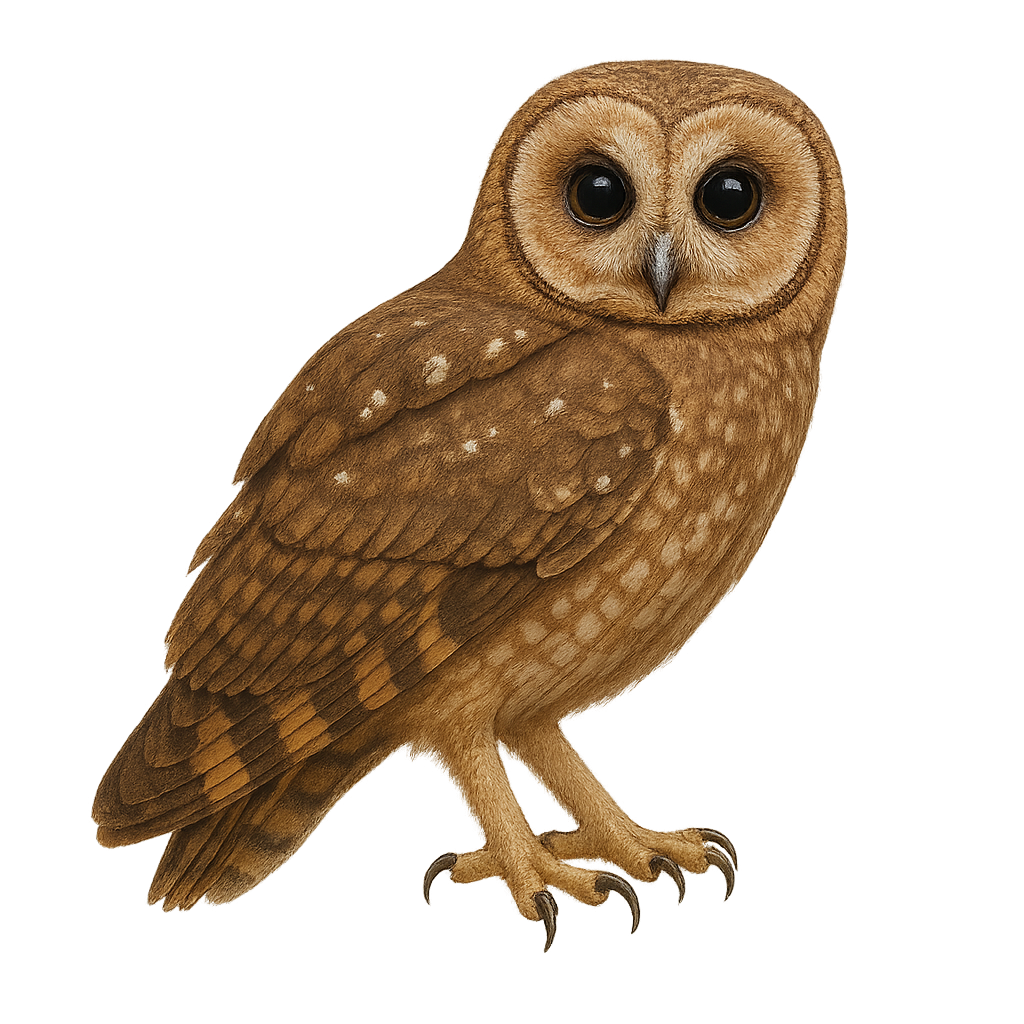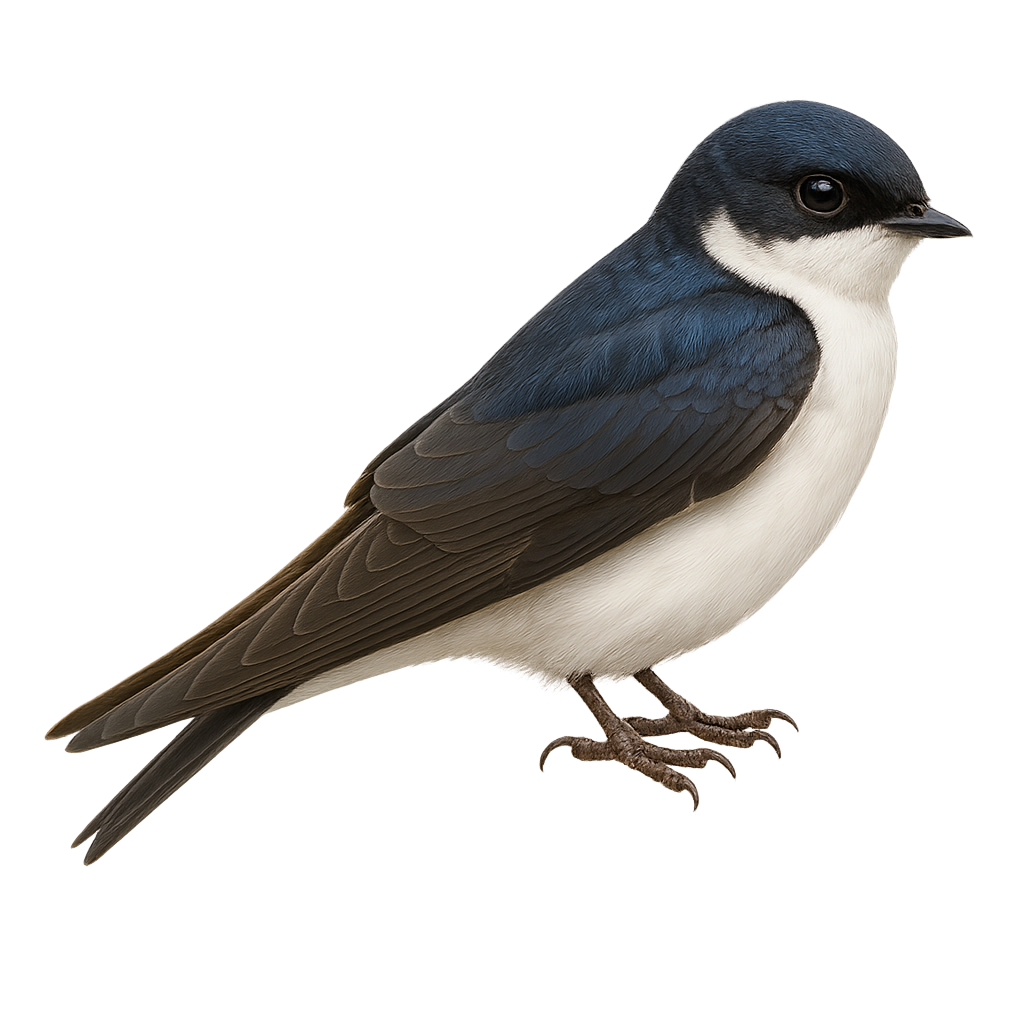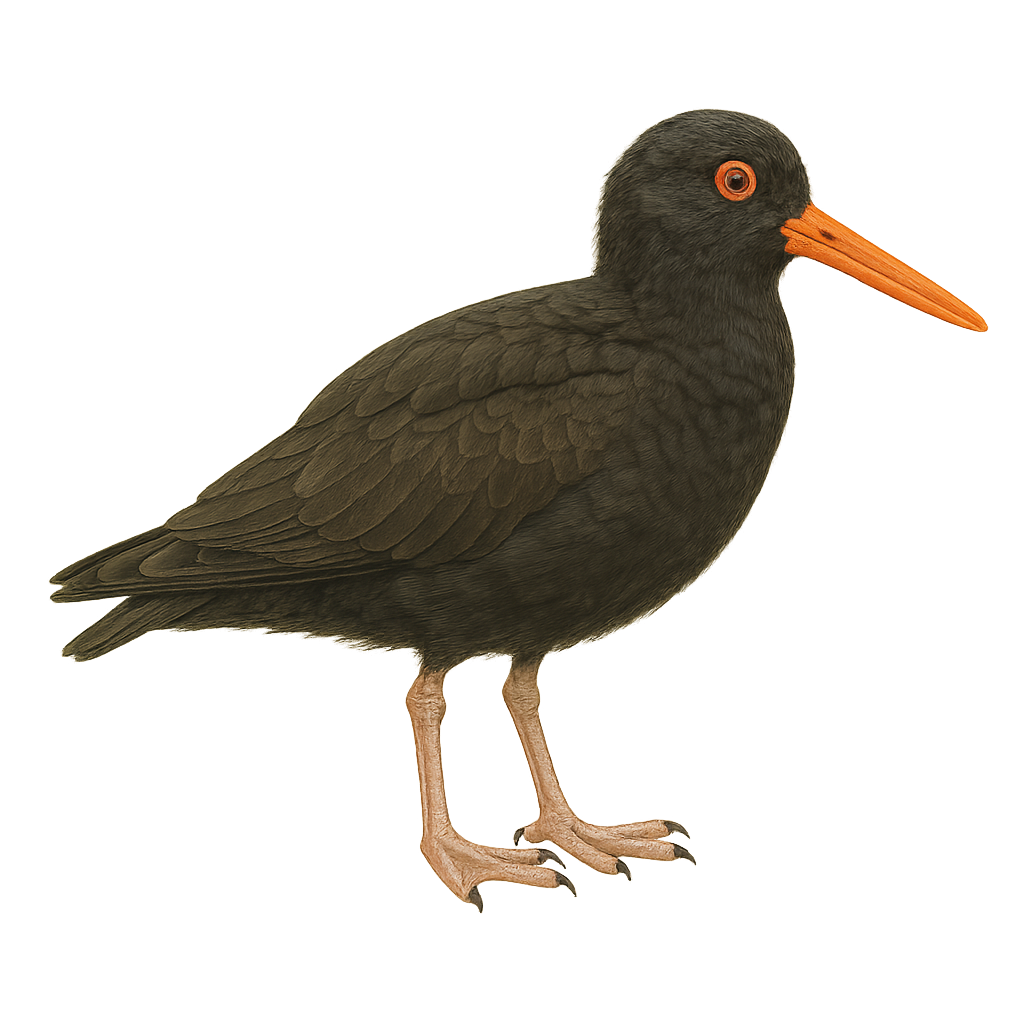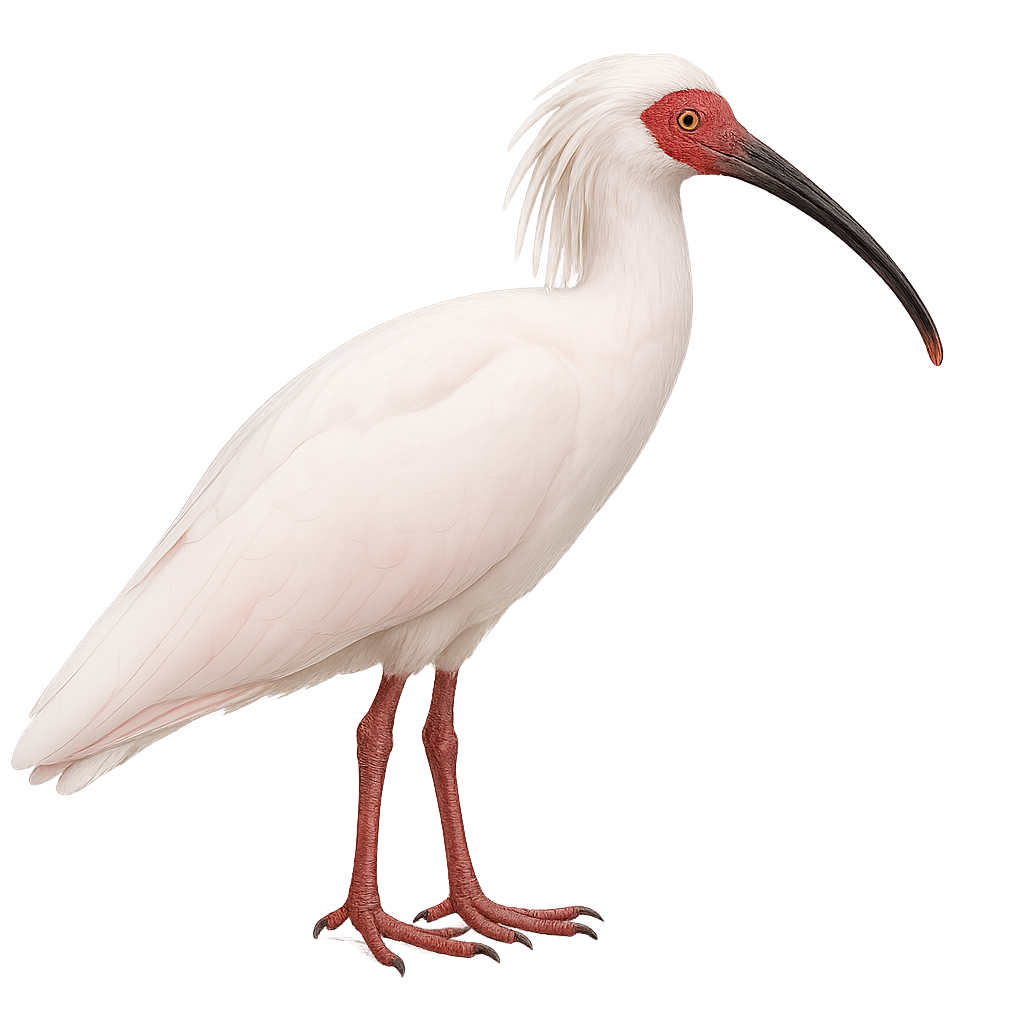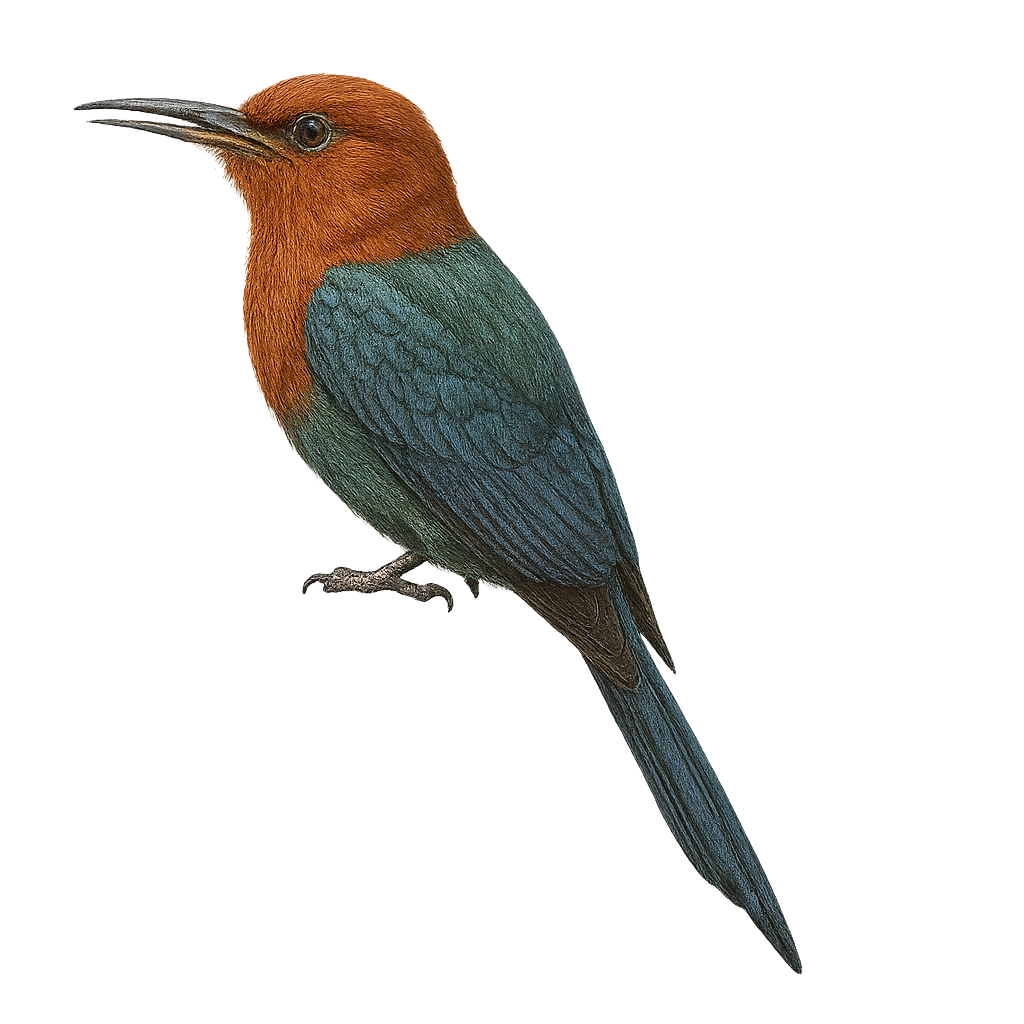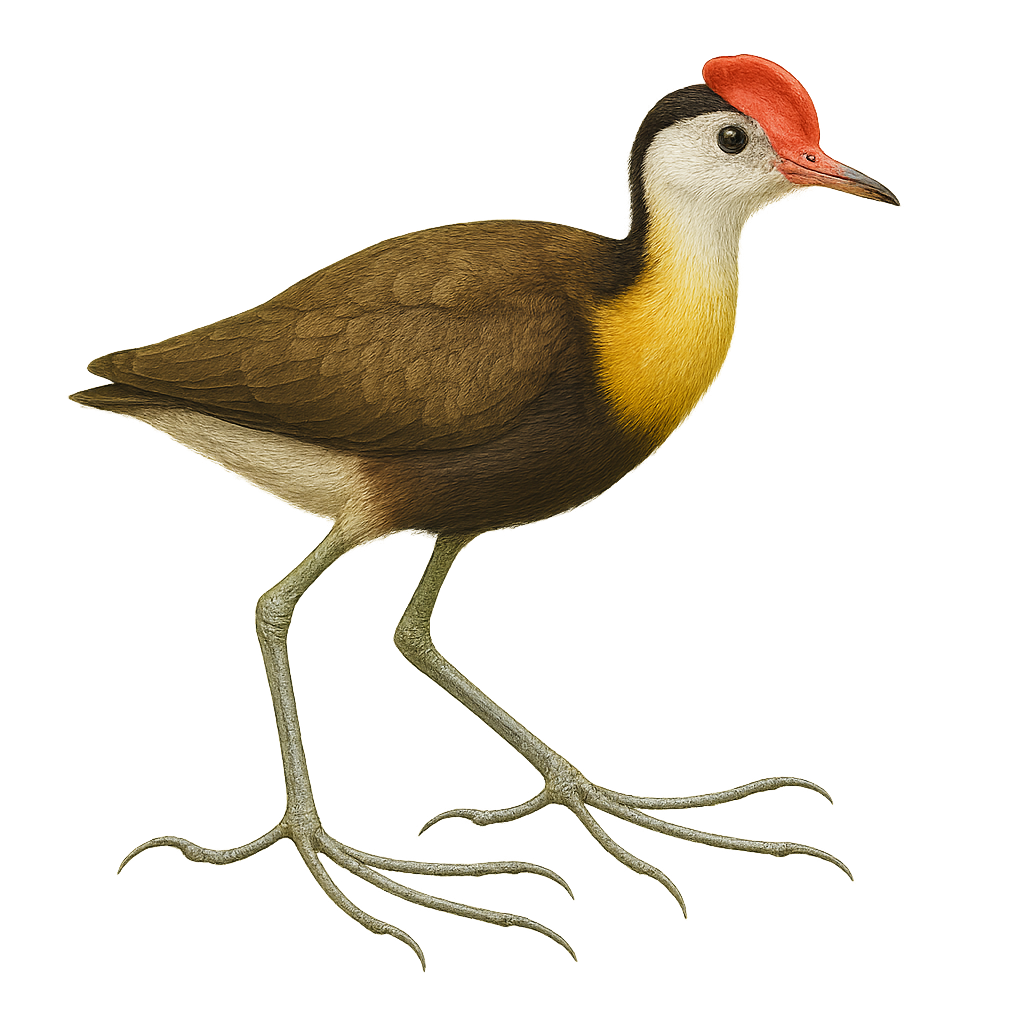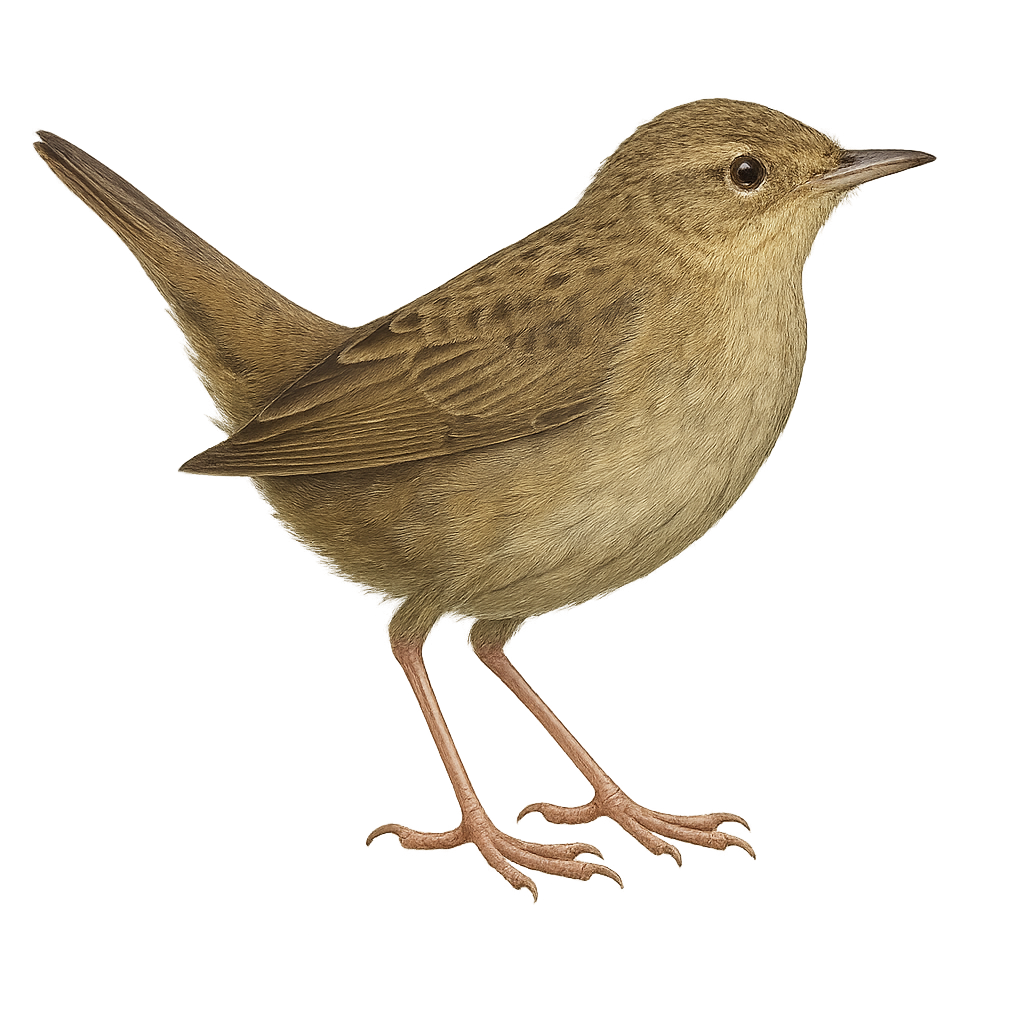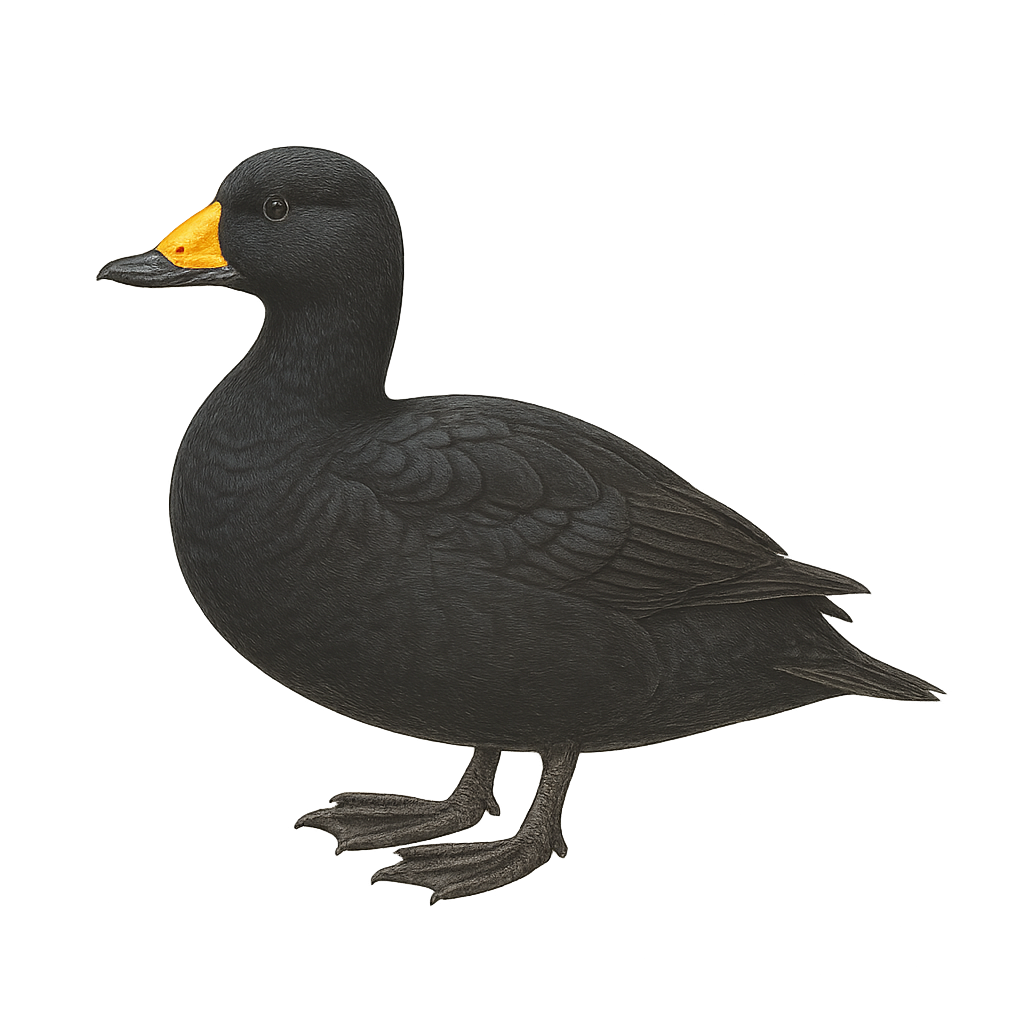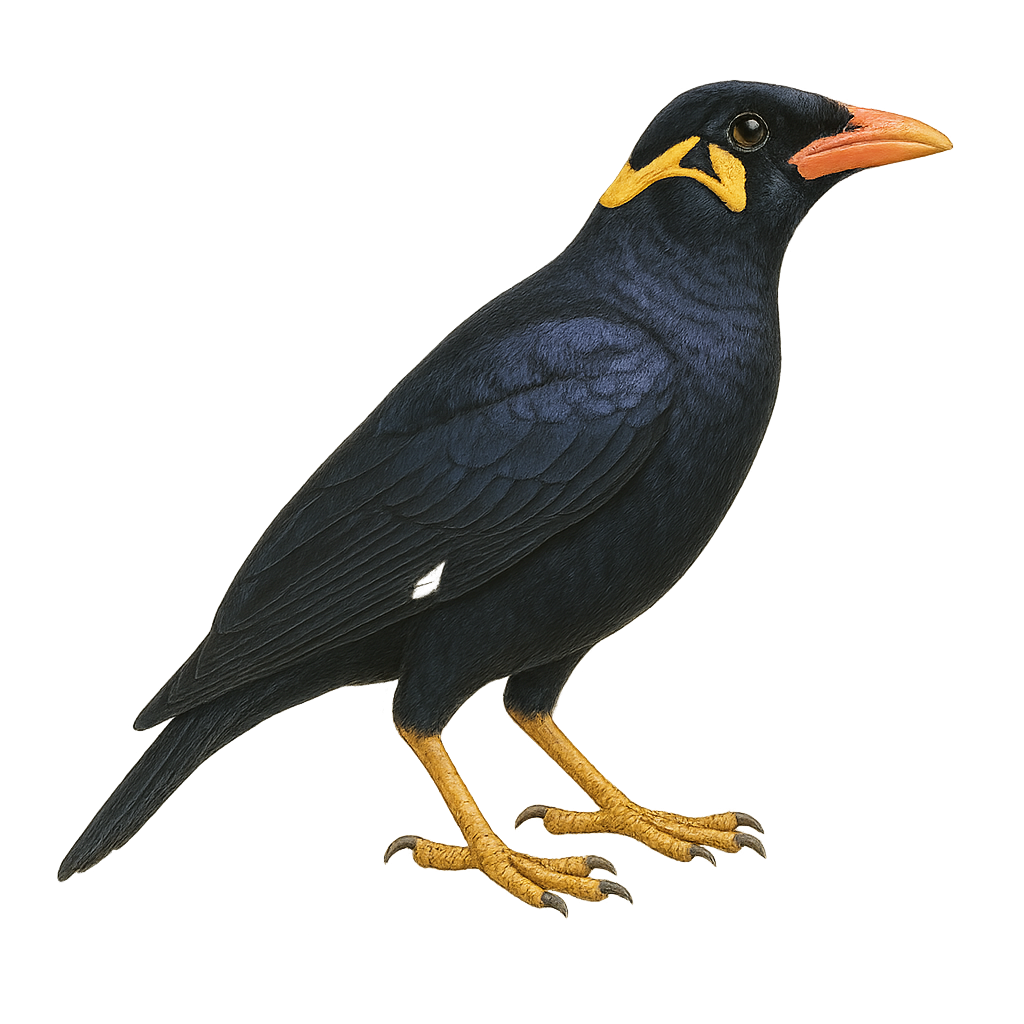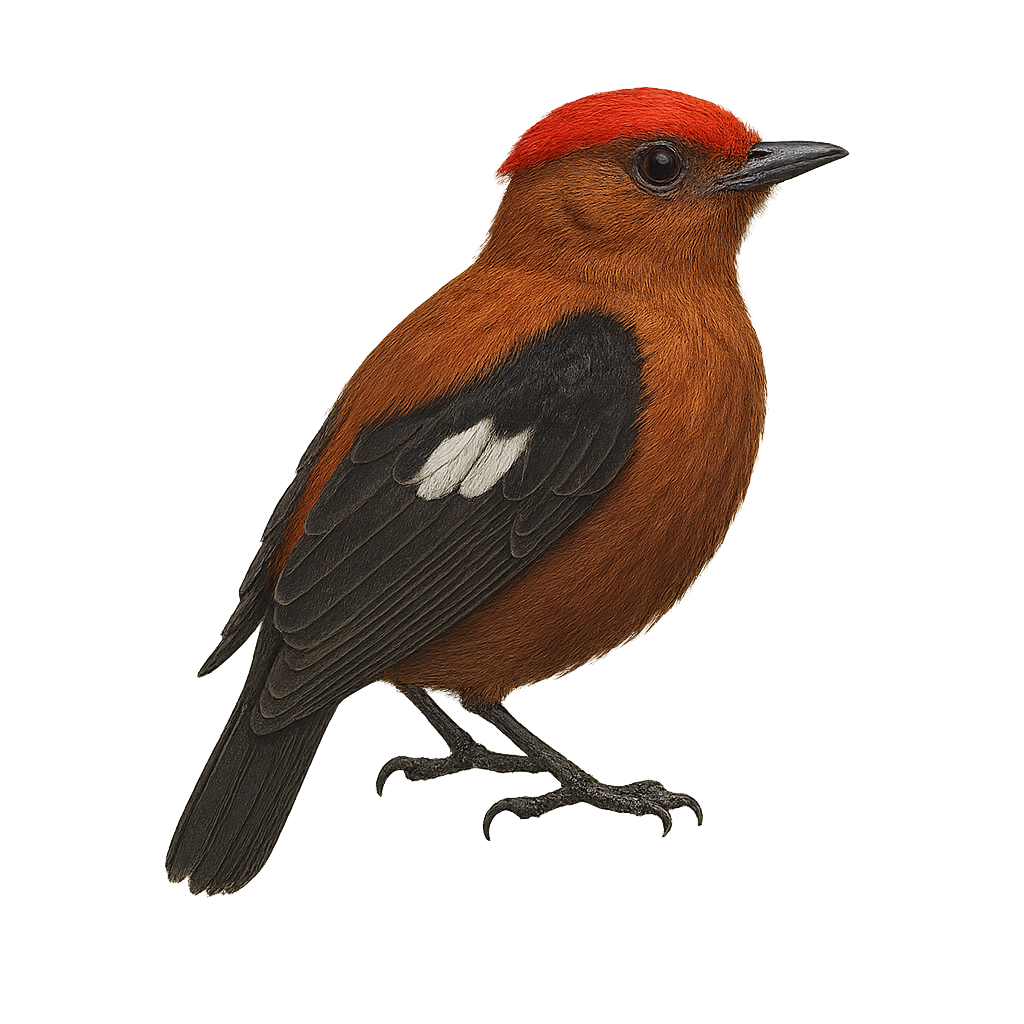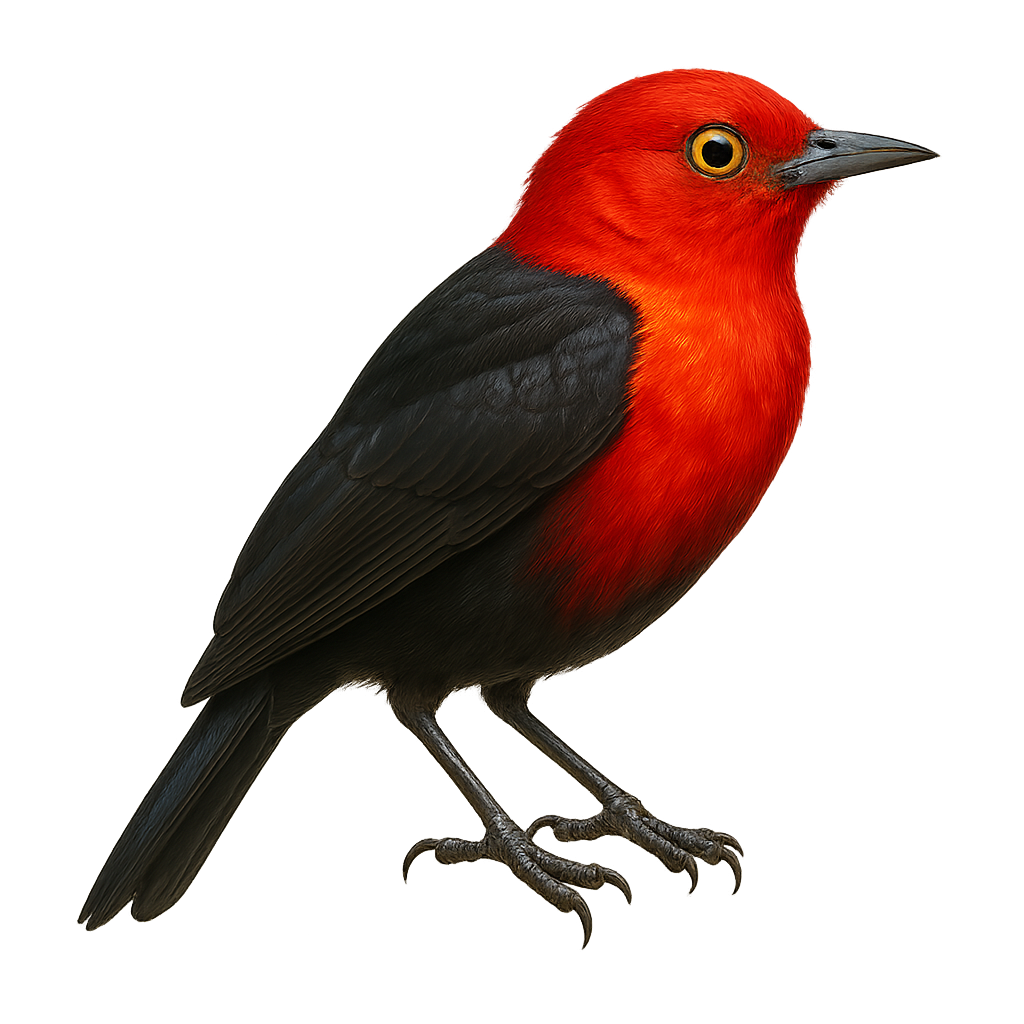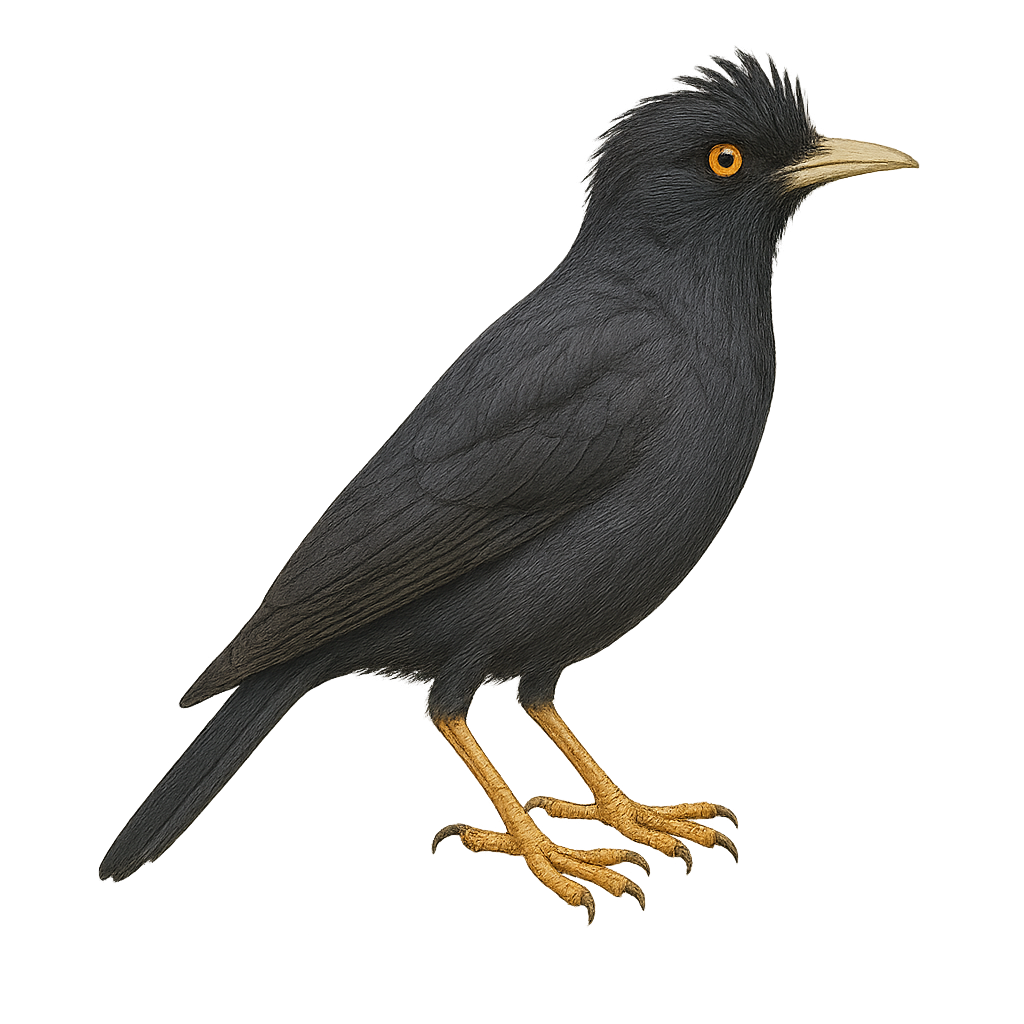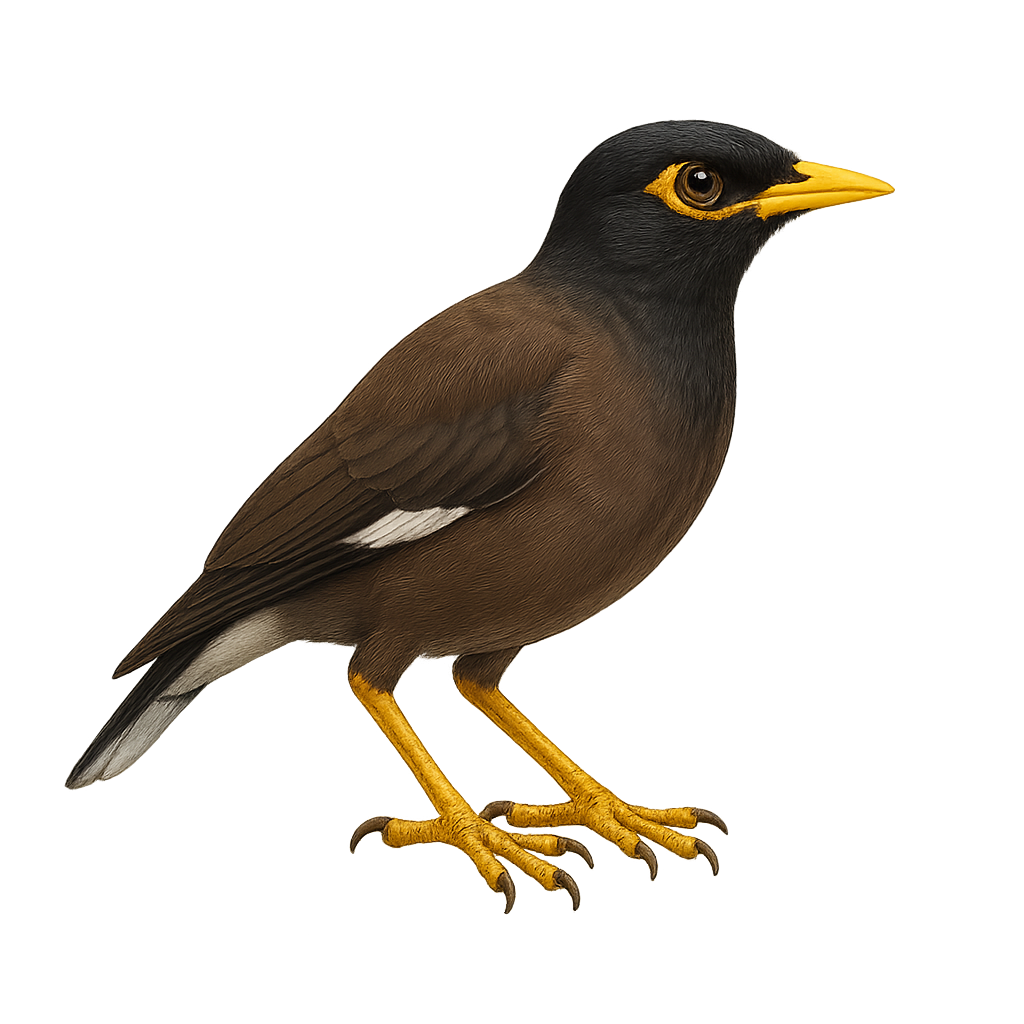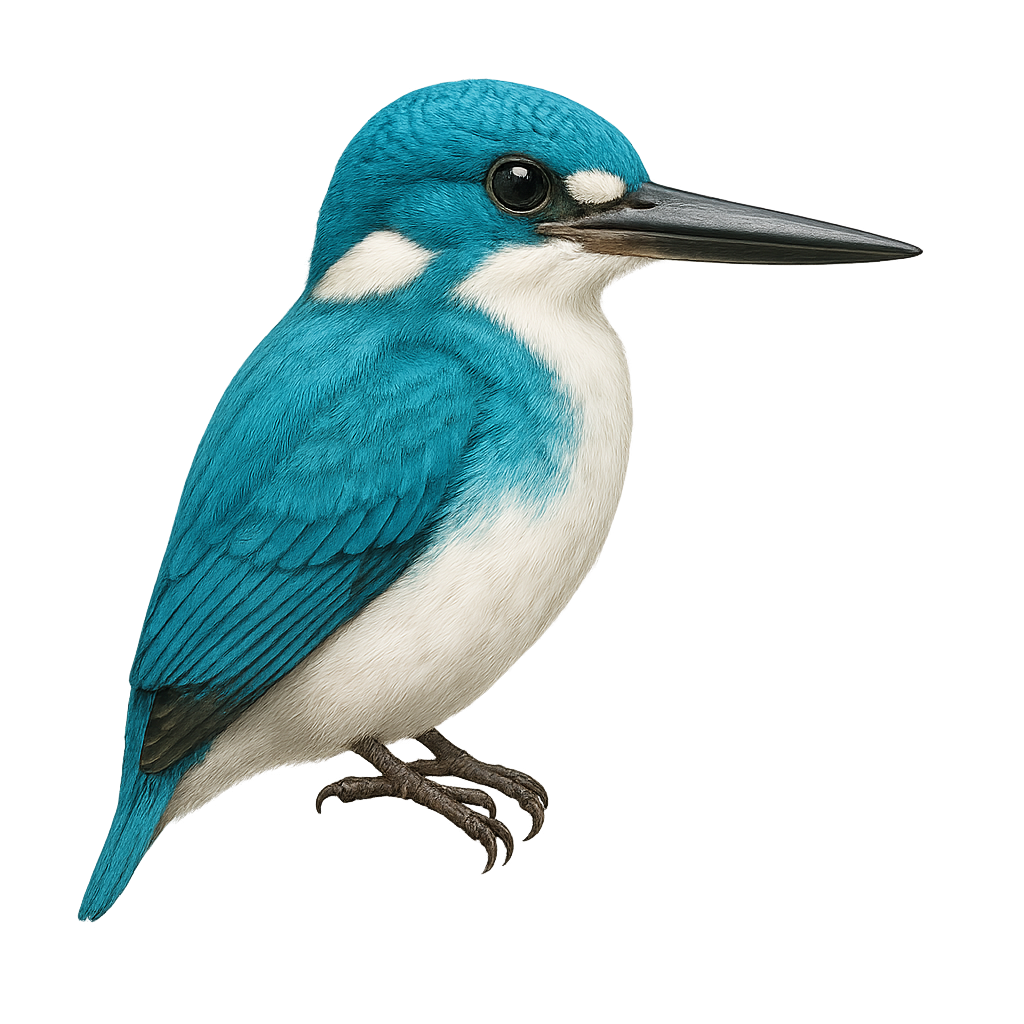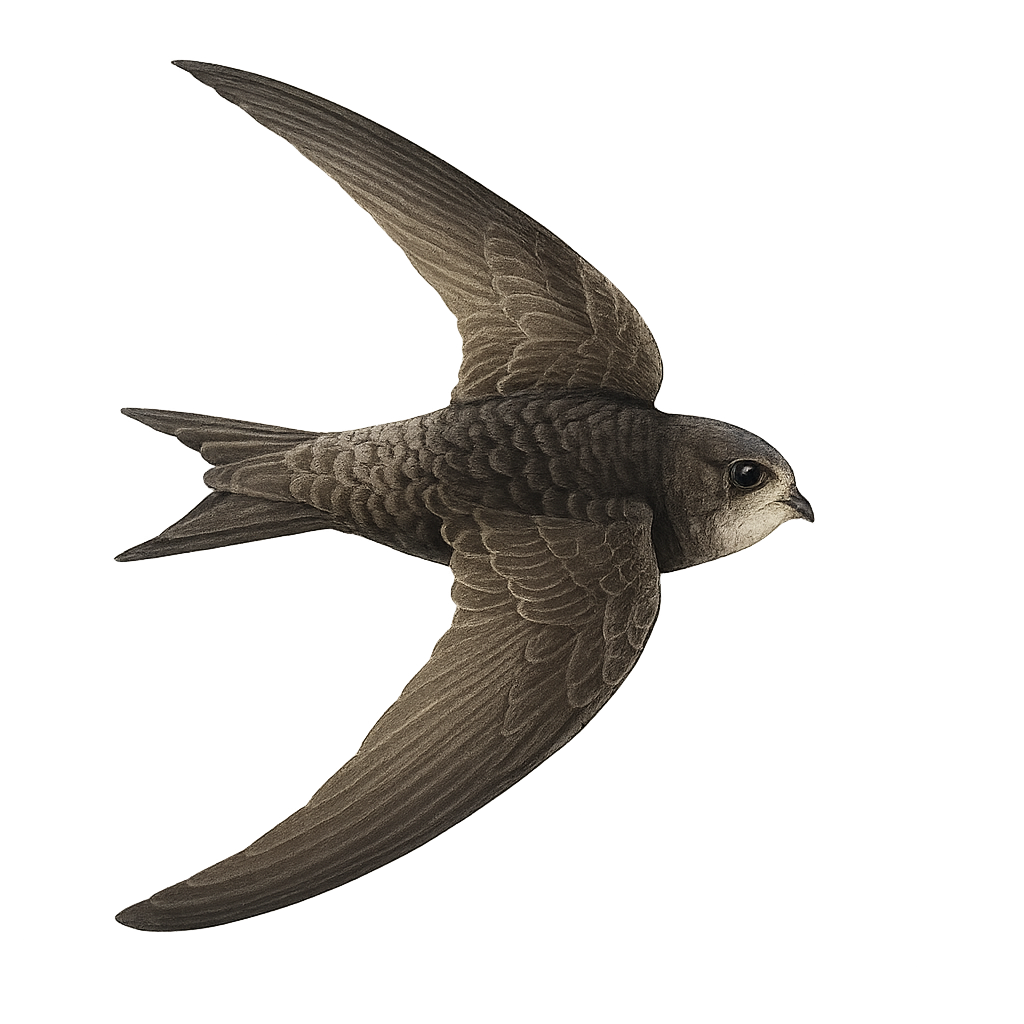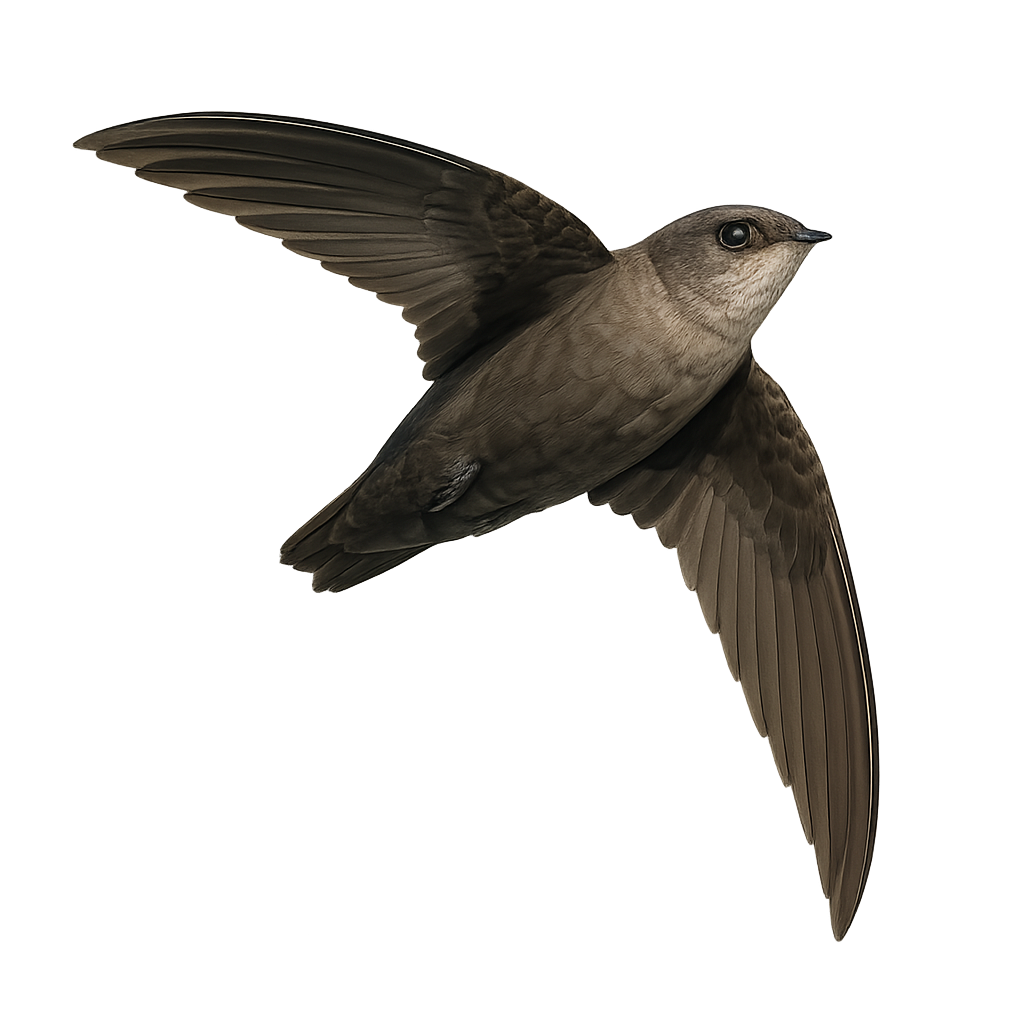The Collared Pratincole is an elegant bird, recognizable by its light brown plumage and forked tail. It features a distinctive black collar around its throat, contrasting with its white belly. Often seen in wetlands, grasslands, and marshes, it hunts insects in flight with remarkable agility. A migratory bird, it winters in sub-Saharan Africa after breeding in Europe and Asia. Known for its fast and graceful flights, often in groups, it emits sharp calls. Although its habitat is threatened by intensive agriculture and wetland drainage, it remains relatively widespread.
The common gull, or Larus canus, is a medium-sized seabird, identifiable by its light grey back and white underparts. Its wings feature a black band with distinctive white spots. The bill is yellow with a greenish tip, and its legs range from green to yellow. It inhabits coasts, lakes, and rivers, often in colonies. An opportunistic feeder, it consumes fish, invertebrates, and human waste. Partially migratory, it moves southward in winter. Its population is stable, though sensitive to environmental changes. The common gull is a social bird, often seen in groups, playing a crucial role in coastal ecosystems.
The common raven is an impressive bird found in mountains, forests, and open areas across Europe, Asia, and North America. It is easily recognized by its large size, glossy black plumage, and hoarse call. This corvid is known for its exceptional intelligence and complex social behavior. It primarily feeds on carcasses, insects, and sometimes fruits and seeds.
The Ringed Plover is a small coastal bird, easily recognizable by its compact size and distinctive plumage. It measures about 20 to 23 cm in length, with a wingspan of 40 to 45 cm, and weighs between 40 and 60 g. Its plumage is mainly beige and white, with black markings on its head and chest, and a distinctive black band around its eyes. The Ringed Plover is a migratory bird, primarily found on beaches, shorelines, and mudflats, where it feeds on small invertebrates, such as worms, crustaceans, and insects. It is often seen running quickly on the sand, searching for food, then stopping abruptly to catch it. The Ringed Plover lives in colonies during the breeding season, but generally prefers to remain alone or in small groups. Although it is not currently endangered, the Ringed Plover is vulnerable to human disturbances, such as the loss of its coastal habitat and the impact of pollution.
The Cape Sparrow, or Passer motitensis, is a small, robust bird primarily found in southern Africa. It is characterized by its brown and grey plumage, with a black cap on males and a grey cap on females. These birds are often seen in groups, feeding on seeds, insects, and small fruits. They adapt well to urban and rural environments, nesting in cavities or artificial structures. Their song is a simple yet melodious chirp. Although their population is stable, they are sometimes threatened by habitat loss and competition with other sparrow species.
The Common Crane is a large migratory bird, easily recognizable by its slender silhouette, long neck, and extended wings. It stands about 1.2 meters tall, with a wingspan of 2 to 2.5 meters, and weighs between 4 and 6 kg. Its plumage is mainly gray, with white markings on the head, neck, and wings. It has a red head and a small tuft of feathers on top, giving it a distinctive appearance. The Common Crane primarily inhabits wetlands, marshes, and lakes across Europe and Asia, with large populations in Scandinavia, Germany, Poland, and the Mediterranean Basin. It is a migratory bird that travels to southern Europe and Africa for the winter. It feeds mainly on plants, roots, seeds, and occasionally insects. The Common Crane is also known for its impressive group migrations, with thousands of individuals flying in a "V" formation. While the species is not endangered, it is vulnerable to the loss of its natural habitat and disruption of its breeding sites.
The Crowned Crane is a large crane species, easily recognizable by its majestic golden plume crown on its head. It stands about 1 meter tall, with a wingspan of 1.8 to 2.2 meters, and weighs between 3 and 5 kg. Its plumage is mainly light gray, with white feathers on its belly and wings, and a head adorned with a golden crest, giving it a royal appearance. This species is primarily found in East Africa, notably in Uganda, Kenya, and Tanzania, where it inhabits wetlands, marshes, and grasslands. The Crowned Crane primarily feeds on seeds, roots, insects, and occasionally small vertebrates. It is a social bird, living in groups and often performing spectacular courtship displays, during which it engages in dances and calls. Although the Crowned Crane is considered "vulnerable," conservation efforts have been implemented to protect the species, as it faces threats from habitat loss, hunting, and human disturbance.
The Chestnut-headed Bee-eater is a colorful and fascinating bird belonging to the Meropidae family. It is distinguished by its chestnut-colored head, bright green back, and vivid yellow throat. Its tail is long and tapered, often adorned with elongated central feathers. This bird is primarily insectivorous, feeding on various flying insects, especially bees and wasps, which it catches in flight with remarkable agility. It is found in open forests, woodlands, and grasslands of South and Southeast Asia. The Chestnut-headed Bee-eater is a sociable bird, often seen in groups, and it nests in burrows dug into sandy banks.
The Common Guillemot is a seabird characterized by its black and white plumage, and its streamlined body which allows it to swim with agility. It measures about 40 to 45 cm in length and weighs between 500 and 700 g. Its head is black with sharp white eyes, and its wings are short and pointed, suited for diving. The Common Guillemot primarily lives on coastal cliffs, where it nests in very dense colonies, often on inaccessible sites. It is found mainly in Northern Europe, particularly in Scandinavia, the United Kingdom, and Iceland, but also along the coasts of the North Atlantic. The Common Guillemot is an excellent diver, primarily feeding on fish, particularly small herring and capelin, which it catches by diving underwater in search of prey. While the species is not endangered, it is vulnerable to marine pollution, climate change, and disruption of its breeding sites.
The Carmiol's Tanager is a medium-sized bird, measuring about 18 cm in length. It features primarily olive-green plumage, with darker shades on the wings and tail. Its head is marked by a grayish cap, and it has a robust, slightly hooked beak suited for its varied diet. This bird primarily feeds on fruits, insects, and small invertebrates. It is mainly found in the humid forests and wooded areas of Central America, particularly in Costa Rica and Panama. The Carmiol's Tanager is often seen in small groups, actively moving through the canopy in search of food. Although not considered threatened, deforestation poses a potential threat to its natural habitat.
The Common Merganser is a large diving duck measuring between 58 and 71 cm in length, with a wingspan of 82 to 97 cm. The male features a dark green iridescent head, white body, and black back, while the female has a reddish-brown crested head and light gray body. This duck is characterized by its long, slender red bill with serrated edges, ideal for catching slippery fish. It inhabits clear-water rivers and lakes in forested regions of Europe, Asia, and North America. Nesting in tree cavities or cliff crevices, it lays between 6 and 17 eggs per season. Its diet mainly consists of fish, but also includes amphibians, crustaceans, and aquatic insects. Although listed as Least Concern, habitat loss can locally impact its populations.
The capped heron, or Pilherodius pileatus, is an elegant and distinctive bird, recognizable by its black head contrasting with its white body and long blue bill. It primarily inhabits the humid tropical forests of Central and South America, often near slow-moving rivers and swamps. This solitary bird is often seen fishing, using its patient hunting technique to catch fish and small invertebrates. Its breeding season varies by region but is generally associated with the rainy season when food is abundant. Although its conservation status is currently stable, deforestation and habitat loss pose potential threats to its populations.
The Cattle Egret is a small heron with primarily white plumage, featuring touches of yellow on the neck and head during the breeding season. It measures about 55 to 60 cm in length, with a wingspan of 90 to 100 cm, and weighs between 300 and 500 g. This heron is notable for its social behavior, often seen in the company of large herds of cattle or near farm animals, hence its name "cattle egret." It takes advantage of the presence of these animals to hunt insects, worms, and other small animals disturbed by the movement of livestock. The Cattle Egret primarily inhabits Africa, Asia, and parts of Europe, such as the Mediterranean. It feeds mainly on small invertebrates, insects, and occasionally small fish, and is particularly efficient in agricultural and wetland areas. Although the species is widely spread, it may be vulnerable to habitat loss and changes in farming practices.
The Cape Owl, Asio capensis, is a species of nocturnal bird of prey belonging to the Strigidae family. This owl is characterized by its brown plumage speckled with white and black, allowing it to blend seamlessly into its natural habitat. It has long tufts on its head, often erect, and piercing yellow eyes. It is primarily found in the wetlands, marshes, and savannas of sub-Saharan Africa. This owl is an opportunistic hunter, feeding mainly on small mammals, birds, and insects. Although its conservation status is concerning due to habitat loss, it remains relatively widespread in some areas.
The Chilean Swallow, Tachycineta leucopyga, is an elegant and agile bird, easily recognizable by its metallic blue back and white belly. It is often seen in flight, catching insects in mid-air. This species is widespread in South America, particularly in open areas near water, such as marshes and rivers. It nests in natural or artificial cavities, and its breeding season coincides with the austral spring. Although generally not very shy, it can become suspicious if it feels threatened. Its ability to adapt to different habitats makes it a resilient species, although habitat degradation could pose a long-term threat.
The Chatham Island Oystercatcher is an endemic bird of the Chatham Islands, New Zealand. It is characterized by its striking black and white plumage, bright red bill, and long pink legs. This coastal bird is often seen on sandy beaches and rocky areas where it primarily feeds on mollusks and crustaceans. It is known for its territorial behavior, especially during the breeding season. With an estimated population of about 250 individuals, it is considered an endangered species. Conservation efforts include habitat protection and management of introduced predators.
The Crested Ibis, scientifically known as Nipponia nippon, is an elegant and rare bird once widespread in East Asia. It is easily recognizable by its striking white plumage, long red legs, and curved black beak. Its head features a bare reddish skin, and a distinctive crest adorns its nape. This majestic bird primarily inhabits wetlands, rice paddies, and marshes, where it feeds on small fish, insects, and crustaceans. Unfortunately, the Crested Ibis has experienced a dramatic population decline due to habitat loss and hunting, but conservation efforts have helped stabilize some populations.
The Chestnut-headed Woodhoopoe is a fascinating bird, recognizable by its chestnut-colored head and iridescent plumage. It belongs to the Phoeniculidae family and is primarily found in the tropical forests of Central and East Africa. This bird measures about 30 to 35 cm in length, with a long, curved beak ideal for extracting insects and larvae from tree bark. Its social behavior is remarkable, often living in family groups that communicate through distinctive calls. The Chestnut-headed Woodhoopoe is a diurnal bird, active mainly in the morning and late afternoon. Although relatively tolerant of human presence, it prefers dense wooded areas where it can easily hide.
The Comb-crested Jacana, known for its long legs and slender toes, is a fascinating aquatic bird primarily inhabiting the wetlands of Australia and New Guinea. It is easily recognizable by its bright red comb and golden-brown plumage. This bird is an excellent swimmer and walker on water lilies, thanks to its long, thin toes that distribute its weight. The Comb-crested Jacana is polyandrous, meaning the female mates with several males, leaving them responsible for incubating the eggs and caring for the young. It primarily feeds on insects and other small invertebrates found on the water's surface.
The Cedar Waxwing is an elegant and sociable bird, easily recognizable by its sleek, silky plumage of grayish-brown with bright yellow accents on the tail. It also sports a distinctive crest and a black mask around the eyes. This passerine is often seen in flocks, feeding primarily on berries and fruits, making it a key player in seed dispersal. It is mainly found in open forests, orchards, and urban areas with fruit-bearing trees. Its ability to move in large flocks allows it to cover vast distances in search of food. The Cedar Waxwing is also known for its elaborate courtship displays, where partners exchange berries.
The common grasshopper warbler is a small passerine about 13 cm long with streaked brown upperparts and long undertail coverts. Secretive in dense grassy vegetation and low scrub at water margins, it feeds on insects gleaned from foliage. During breeding, the male sings from a low branch or elevated grass stem to defend its territory and court the female.
The common scoter is a medium-sized diving duck, easily identified by the male's uniform black plumage and the female's dark brown feathers. It primarily inhabits coastal areas and large freshwater bodies. During the breeding season, it is found in northern regions, particularly in Scandinavia and Russia. Its diet mainly consists of mollusks, crustaceans, and small fish, which it catches by diving. The common scoter is a migratory bird, wintering in the milder waters of Western Europe. It is often seen in large flocks, forming rafts on the water.
The Common Hill Myna, Gracula religiosa, is a remarkable bird known for its ability to mimic sounds and human speech. Native to the tropical forests of Southeast Asia, it is easily recognizable by its glossy black plumage, white wing patches, and bright yellow wattles behind the eyes. This sociable bird lives in groups and primarily feeds on fruits, nectar, and insects. It is often seen in humid forests, mangroves, and plantations. Although popular as a pet due to its vocal talents, preserving its natural habitat is crucial for its long-term survival.
The Club-winged Manakin, scientifically known as Machaeropterus deliciosus, is a small bird native to the humid tropical forests of South America. The male is particularly notable for its vibrant plumage and unique courtship display, where it produces a violin-like sound by rapidly rubbing its modified wing feathers together. This fascinating behavior is rare among birds. They inhabit dense undergrowth, feeding primarily on fruits and insects. Although their habitat is threatened by deforestation, they remain relatively common in protected areas. Socially, these birds are intriguing, with males often solitary except during the breeding season.
The Crimson-hooded Manakin is a small, colorful bird found in the tropical forests of South America. Males are particularly striking with their bright golden heads contrasting against their black bodies, while females have more subdued olive-green plumage. These birds are famous for their elaborate courtship displays, where males perform complex dances to attract females. They primarily inhabit dense undergrowth and feed on fruits and insects. Their range extends from Venezuela to Brazil, including Guyana. Although relatively common, their reliance on primary forests makes them vulnerable to deforestation.
The Crested Myna, or Acridotheres cristatellus, is a medium-sized bird, about 25 cm long. It is characterized by its glossy black plumage, striking yellow eyes, and a distinctive crest on its head. Native to Asia, it is often found in urban and rural areas, easily adapting to human-altered environments. An omnivore, it feeds on insects, fruits, and seeds. Its song is varied, including whistles and imitations of other birds. The Crested Myna is a social bird, often seen in small groups. Although primarily sedentary, it may make short movements to find food.
The Common Myna, or Acridotheres tristis, is a medium-sized bird easily recognized by its brown body, black head, and white wing patches. Native to South Asia, it has spread to many parts of the world, sometimes becoming invasive. This bird is highly adaptable, thriving in both urban and rural environments. It is omnivorous, feeding on fruits, insects, and food scraps. The Common Myna is known for its intelligence and ability to mimic sounds, including human speech. It forms monogamous pairs and is often seen in noisy groups.
The Cerulean Kingfisher, Alcedo coerulescens, is a small bird, approximately 16 cm in length. It is known for its striking plumage: a vivid blue back, orange belly, and a head adorned with blue and black bands. This kingfisher is primarily found in Indonesia, inhabiting tropical rainforests and mangroves. It feeds mainly on small fish and aquatic insects, which it catches with precise dives. Although discreet, its high-pitched, repetitive call can be heard near water bodies. Due to deforestation, its habitat is threatened, impacting its populations.
The Common Swift, Apus apus, is a migratory bird known for spending most of its life in flight. With a wingspan of 40 to 44 cm, it is easily recognizable by its crescent-shaped silhouette and dark plumage. Common Swifts are masters of the sky, capable of traveling thousands of kilometers without landing. They feed on insects caught in flight. Their high-pitched call is often heard before they are seen. These birds nest in crevices of buildings or cliffs, and their annual return is a herald of summer.
The Chimney Swift, Chaetura pelagica, is a small migratory bird known for its rapid and agile flight. It is often seen in urban areas, nesting in chimneys and similar structures. Its plumage is primarily dark brown, making it difficult to spot when flying high in the sky. These birds are insectivores, feeding mainly on small flying insects caught in mid-air. Their high-pitched call is often heard before they are seen. Chimney Swifts are social birds, frequently observed in large groups, especially during migration. They play a crucial role in controlling insect populations, thus contributing to ecological balance.


